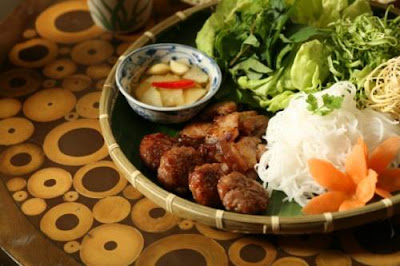Bún chả is popular in the Northern region of Vietnam. In the South, a similar dish of rice vermicelli and grilled meat is called bún thịt nướng.
Tòa chưa tuyên án Dương Chí Dũng, xét hỏi thêm
(Dân trí) - Cựu Chủ tịch Vinalines Dương Chí Dũng vẫn giữ vẻ mặt
điềm tĩnh, thoải mái trao đổi với cán bộ dẫn giải... Chủ tọa phiên tòa
tuyên bố chưa tuyên án để làm rõ một số nội dung.
>> Dương Chí Dũng cười tươi vẫy chào người thân từ xe thùng
>> Dương Chí Dũng xin hoãn thi hành nếu bị kết án tử
13h9’, Tòa hỏi tiếp Dương Chí Dũng. Dũng
nói tại khách sạn Sheraton (TPHCM), Sơn có mang đến tặng Dũng một valy
rượu. Khi đó Dũng đi cùng một số người bạn, đang ngồi uống cà phê ở đó.
Sơn gọi điện, kéo valy đến, Dũng đứng dậy đưa Sơn lên phòng. Sơn nói “em
gửi anh mấy chai rượu để anh tiếp khách”. Sau đó cả 2 cùng xuống dưới.

Dương Chí Dũng nghe tòa hỏi thêm
15h5’, Phúc kể bản thân đã từng có bút phê các
giấy tờ yêu cầu chuyển ban tài chính kế toán kiểm tra các loại chứng từ,
khi nào họ mang sang khẳng định đúng thì mới ký quyệt chi.





